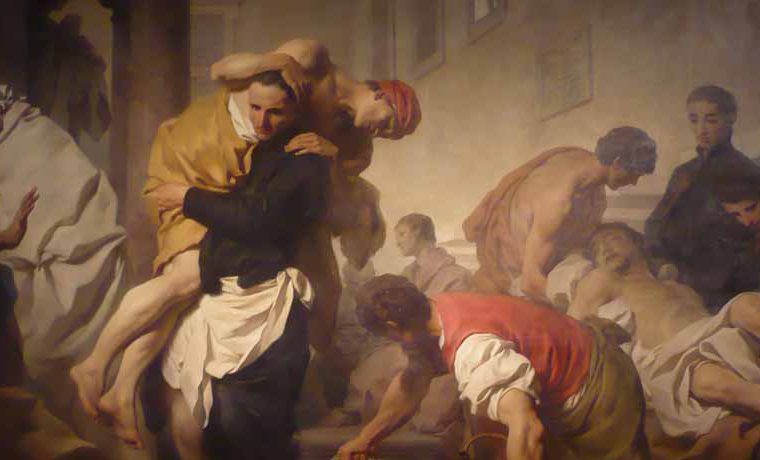 St. Camillus received from God the charism of bearing witness to the world the always present love of Christ for the sick and the suffering. Together with the three vows common to all religious Congregations of Poverty, Chastity and Obedience, he also wanted the fourth vow to be always present: ‘etiam pestis incesserit’, translated today as ‘always, even at the risk to our life’.
St. Camillus received from God the charism of bearing witness to the world the always present love of Christ for the sick and the suffering. Together with the three vows common to all religious Congregations of Poverty, Chastity and Obedience, he also wanted the fourth vow to be always present: ‘etiam pestis incesserit’, translated today as ‘always, even at the risk to our life’.
During the first four centuries of the life of our Order the Camillian religious who were martyrs to charity numbered about 300, but of these we have the names of only 252. Many religious sacrificed their lives and remained anonymous because of the dramatic character of the moments when these episodes took place, which certainly did not provide space for news reports.
In 1589, a few years before the beginning of the Foundation, the first sacrifice took place when help was being given to a fleet of ‘a large number of galleys full of Spanish infantry’ that had been afflicted by petechial typhus, also called ‘castrense’ typhus or the typhus of soldiers in camps.
In 1606 in Naples, because of contagious fevers, we find the sacrifice of the life of a young man of Bucchianico that occurred when he was caring for patients at the SS.ma Annunziata Hospital: Onofrio de Lellis, the nephew of the Founder, who was still a novice. He was offered as an example to the whole of the Congregation. His own uncle cared for him until his death and wept for him bitterly. On that dramatic occasion many other Camillian religious lost their lives; they belong to the ranks of the anonymous to which reference has already been made.
The terrible scourge of the plague that struck Italy in the year 1656 witnessed the sacrifice of at least 96 Camillian religious in a number of cities. The storms about the ‘little plant’ of St. Camillus passed and the religious Order strengthened and spread to the five continents of the world.
The last contribution of blood in order to be at the side of the sick, again at the risk to one’s life, took place in Spain during the well-known civil war of the 1930s. Twelve Camillian religious ‘in odium fidei’ bore witness to the always present love of Christ for the suffering. And even if they are not yet officially enrolled in the Book of Holy Martyrs, they have been placed in the list of martyrs of the ‘Great Jubilee of the Year 2000’.
Taken from F. Ruffini, La vita per Cristo (Ediz. Camilliane, Turin, 1993), p. 140.















Camillians on Facebook
Camillians on Twitter
Camillians on Instagram